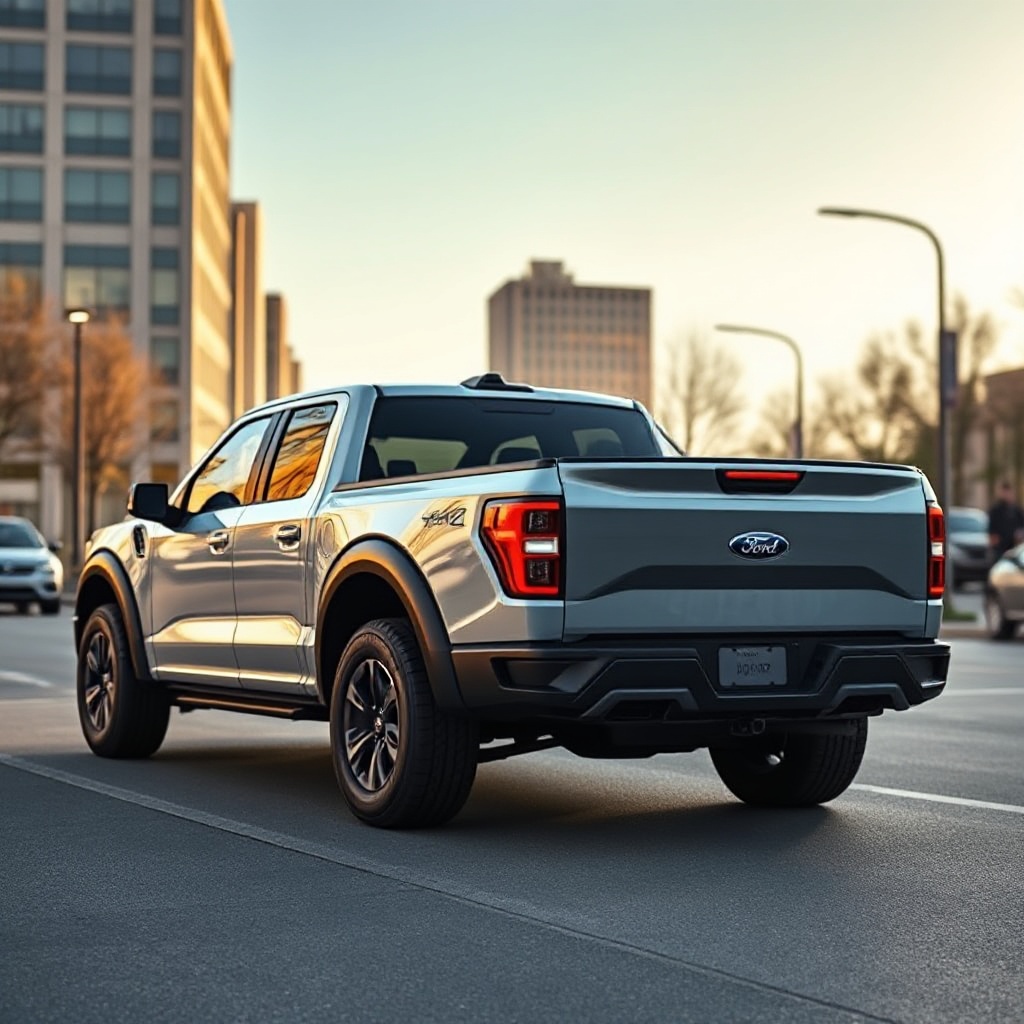
Ford pivots from premium EVs to affordable models, delaying F-150 Lightning until 2028 while developing a sub-$30K electric pickup in quest to democratize EV ownership.

Drivetech Partners
Ford's strategic pivot away from premium electric vehicles marks a critical turning point in automotive electrification. The company's decision to delay the next-generation F-150 Lightning and E-Transit until 2028 reflects a broader recognition that affordable EVs, not luxury models, will drive mass adoption and long-term profitability in the electric vehicle market.
Key Takeaways
Ford has postponed premium electric models until 2028, redirecting resources toward developing more affordable EVs
CEO Jim Farley has labeled the strategic shift a "Model T moment," emphasizing Ford's mission to democratize electric vehicle access
A new compact electric pickup with a target price below $30,000 is being developed to contrast with the $50,000+ F-150 Lightning
Ford's pivot comes amid financial pressure with its Model e division reporting a $1.3 billion loss in Q2 2025
The strategy shift aligns with industry-wide recalibration as automakers recognize mass EV adoption depends on affordability
Ford Pushes Premium Electric Models to 2028 as Market Demand Cools
Ford has significantly delayed its next-generation electric vehicles, pushing the launch of the new F-150 Lightning pickup and E-Transit van to 2028. This represents at least the second major postponement for these models, which were originally slated for production as early as 2025. The company's high-profile Project T3 (the codename for Ford's new full-size electric pickup) is now expected to begin prototype production in 2027 at the massive $5.6 billion BlueOval City complex in Tennessee.
This facility was designed with the capacity to produce 500,000 trucks annually, highlighting the scale of Ford's initial ambitions. The delay follows Ford's earlier announcement that battery output at its BlueOval SK facility would be determined by market demand rather than adhering to a predetermined timeline. With the current F-150 Lightning starting above $50,000, Ford appears to be reconsidering its approach to electric vehicle pricing and market positioning.

The "Model T Moment": Ford's Pivot to Affordable Electric Vehicles
CEO Jim Farley has announced a dramatic strategic shift toward "super affordable" compact and mid-size EVs. This new direction includes plans for a mid-size pickup and small crossover targeted for 2027-2028. Perhaps most notably, Ford has assembled an internal "skunkworks" team to develop a compact electric pickup with an ambitious target starting price below $30,000—a stark contrast to the premium pricing of current full-size electric trucks.
Farley has framed this initiative as Ford's "Model T moment," drawing a direct parallel to the company's historic democratization of automobile ownership in the early 20th century. This time, Ford aims to make electric vehicles accessible to mainstream buyers. The new EV platform will serve as the foundation for multiple future models across segments, with the added benefit of reducing development and production costs by supporting both electric and internal combustion variants.

Financial Realities Driving Ford's Electric Vehicle Realignment
The financial imperatives behind Ford's strategy shift are clear. The company's Model e division reported a substantial $1.3 billion loss in Q2 2025, intensifying pressure to achieve profitability in its electric vehicle operations. The new platform strategy explicitly aims to generate EBIT-positive results within the first year of each future EV launch—a goal that reflects Ford's commitment to financial sustainability in its electric transition.
By delaying its premium models, Ford can redistribute engineering resources and align capital spending more effectively with market needs and customer demand. This approach also helps Ford avoid flooding the market with additional high-priced trucks at a time when demand for expensive EVs is showing signs of cooling. The company appears to be taking a more measured approach to electrification rather than pursuing rapid transformation at the expense of profitability.
Battery Technology as the Key to Affordable Electrification
Ford's next wave of electric vehicles, including the mid-size pickup, will utilize lithium iron phosphate (LFP) batteries sourced from Ford's BlueOval Battery Park in Michigan. Production of these batteries is scheduled to begin in 2026, with the explicit goal of achieving materially lower cell costs compared to current battery technologies.
LFP batteries offer several advantages that are critical for Ford's affordability mission:
Lower material costs than traditional nickel-manganese-cobalt batteries
Improved durability and longer cycle life
Better thermal stability and safety characteristics
Reduced dependency on rare and costly materials
Despite the delays to its premium electric models, Ford remains committed to its overall electrification goal, maintaining plans for 50% of global sales to be fully electric by 2030.
Shifting Market Dynamics Reshaping the EV Landscape
When Ford initially launched the F-150 Lightning and E-Transit, these vehicles enjoyed strong demand. However, a combination of factors has since changed the market outlook: higher costs, waning incentives, elevated interest rates, and softening demand for expensive large EVs. The EV market has evolved from early adopters willing to pay premium prices to mainstream consumers who demand affordability.
Ford's pivot directly addresses the challenge of making electric vehicles accessible for the average buyer while maintaining profitability. Despite these adjustments to its timeline, the company is maintaining its substantial $50+ billion investment in electrification, advanced battery technology, and supporting infrastructure—demonstrating a long-term commitment to the electric future while adapting to current market realities.
Industry-Wide Recalibration of Electric Vehicle Strategies
Ford's strategic shift mirrors broader trends across the automotive industry as manufacturers re-evaluate their EV portfolios to balance costs, profitability, and consumer demand. Multiple companies are pivoting from high-end, niche electric vehicles toward mass-market, affordable models that can achieve higher production volumes and broader appeal.
The industry continues to face significant challenges in mainstream EV adoption, including expanding charging networks and reducing production costs. Ford's realignment demonstrates the auto industry's growing recognition that mass adoption depends on bringing electric vehicle prices closer to traditional vehicles—a reality that many manufacturers are now acknowledging in their revised product plans and timelines.
Making the Electric Transition Financially Sustainable
At its core, Ford's strategy shift acknowledges the financial imperative of profitability in the electric transition rather than focusing solely on technical feasibility. BlueOval City's massive $5.6 billion investment highlights the financial stakes in getting the EV transition right. By delaying premium models, Ford can better synchronize production capacity with actual market demand, potentially avoiding costly overcapacity.
This more measured approach allows Ford to build a sustainable path to electrification, ensuring the company's long-term viability while still moving toward an electric future. The strategy recognizes that the transition to electric vehicles must make business sense, not just environmental sense, to succeed at scale.
The Challenge of Mainstream Electric Vehicle Adoption
Ford faces the central challenge confronting the entire EV industry: balancing consumer expectations for affordability with the higher costs of electric technology. The industry-wide push for smaller, more affordable EVs signals recognition that mass adoption depends fundamentally on price accessibility.
Ford's "Model T moment" strategy aims to break through the affordability barrier that has limited electric vehicle sales primarily to luxury segments. The delayed timeline for premium models demonstrates the company's recognition that mainstream adoption must precede premium expansion—a reversal of the traditional automotive approach of introducing new technologies at the high end before they trickle down to mass-market vehicles.
By prioritizing affordability and accessibility, Ford is betting that the future of electric vehicles lies not in premium trucks and vans but in practical, everyday vehicles that average consumers can afford and appreciate.
Sources:
Ford Authority - Full-size Ford EV Pickup, Van Pushed Back To 2028 Amid Pivot
Car and Driver - Ford Delays Next-Gen Electric Truck, Van
Autoblog - Next Ford Lightning Won't Arrive Until 2028 As EV Plans Shift
EV.com - Ford Resets EV Strategy With Compact, Affordable Models
Autobody News - Ford Pushes Full-Size EV Pickup, Van To 2028 In Strategy Shift






